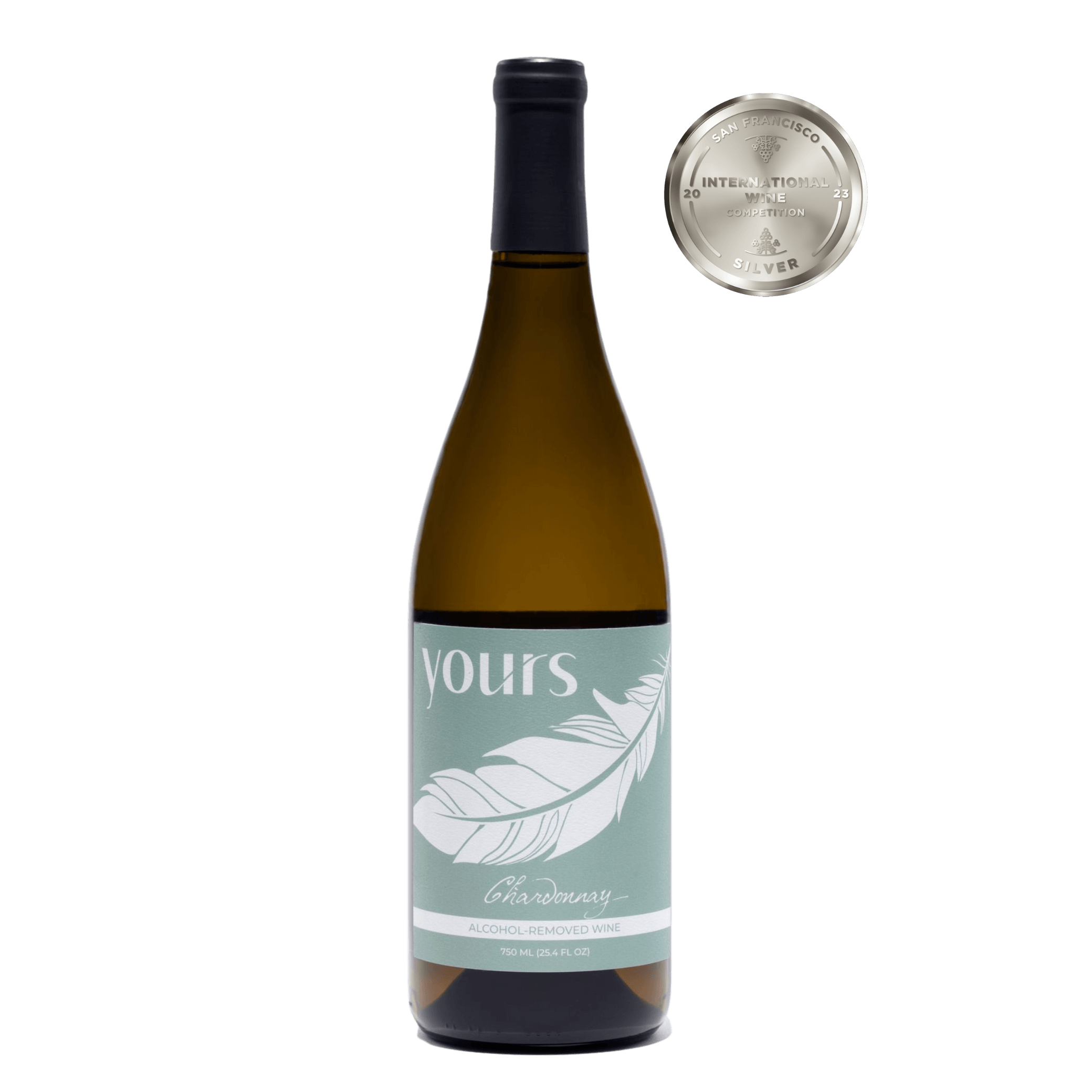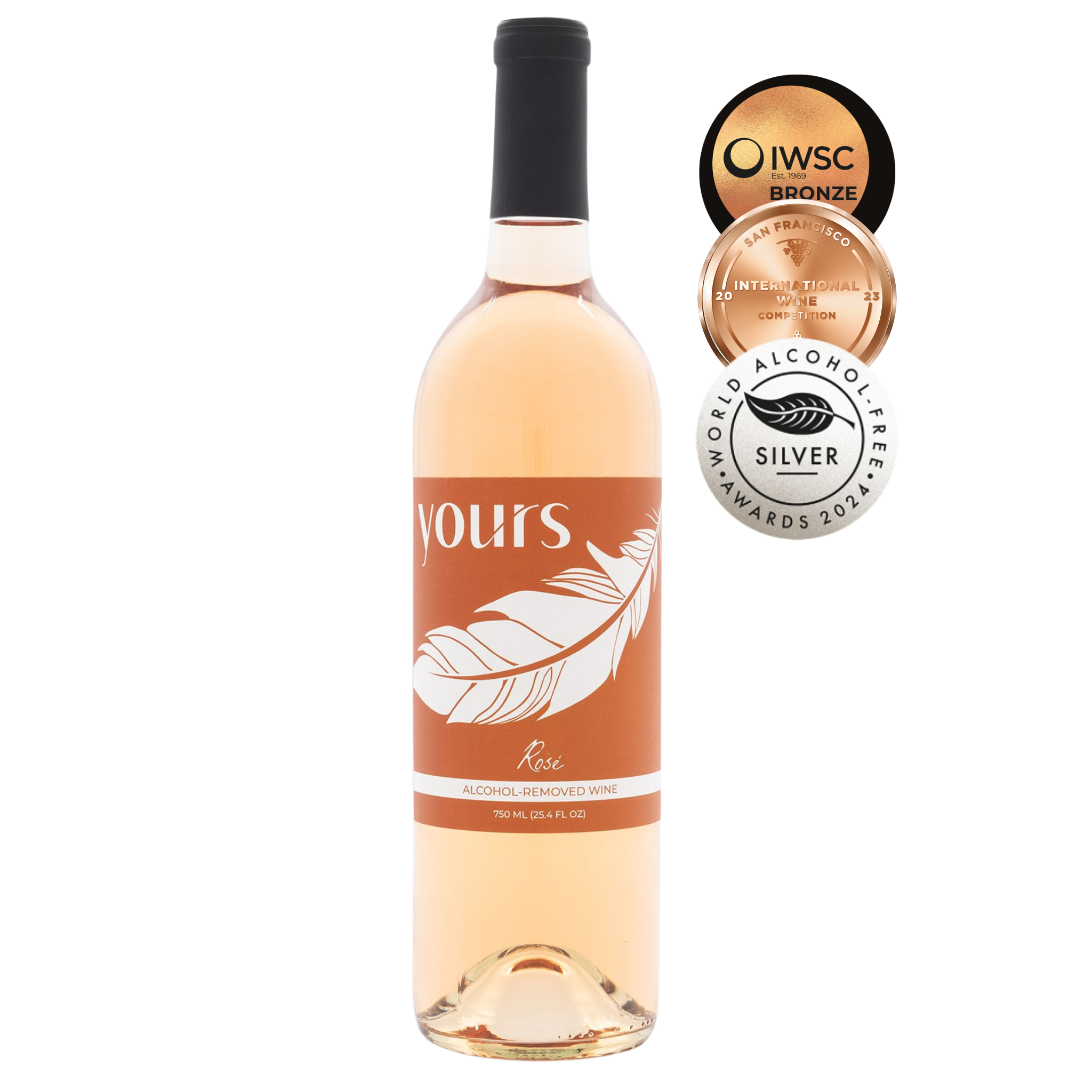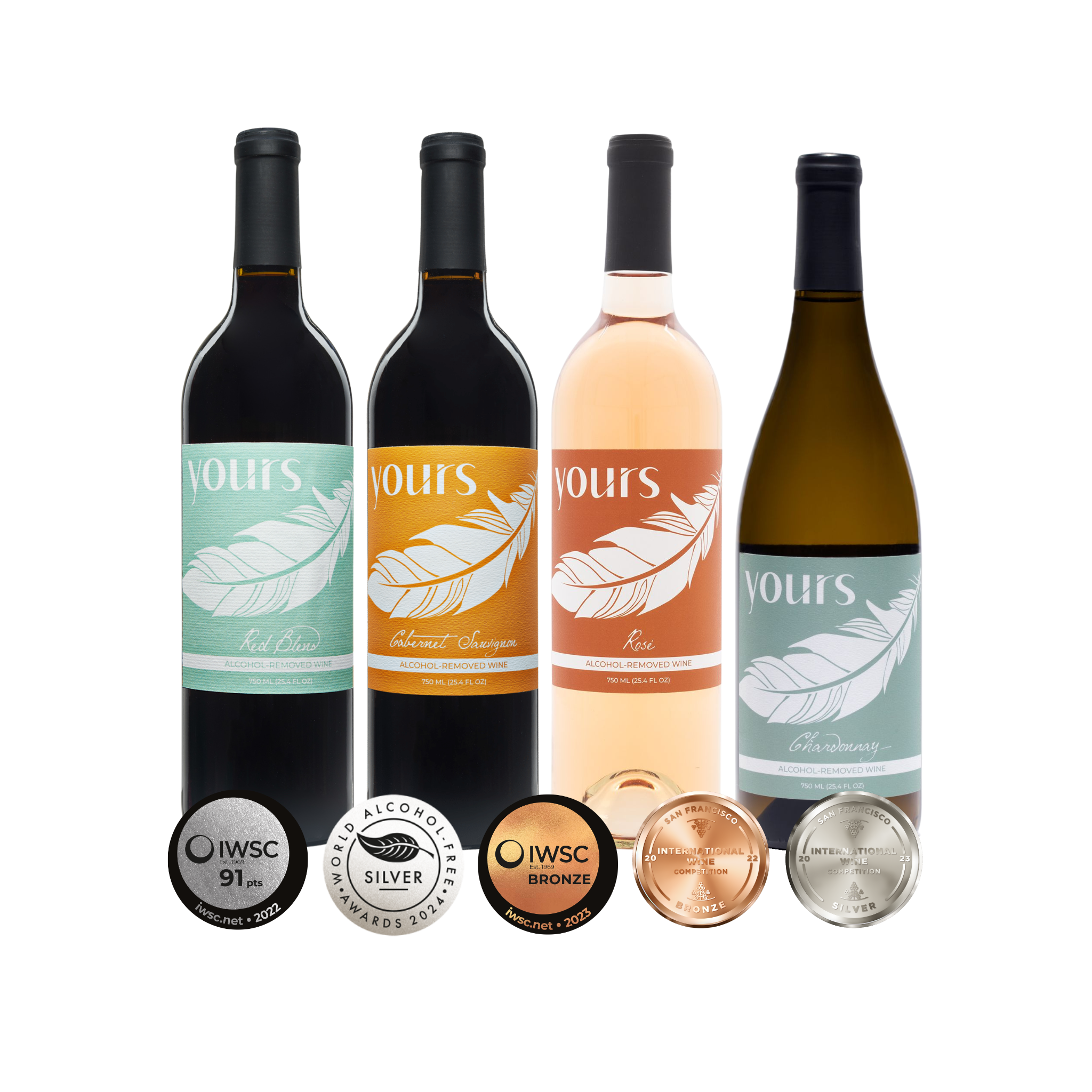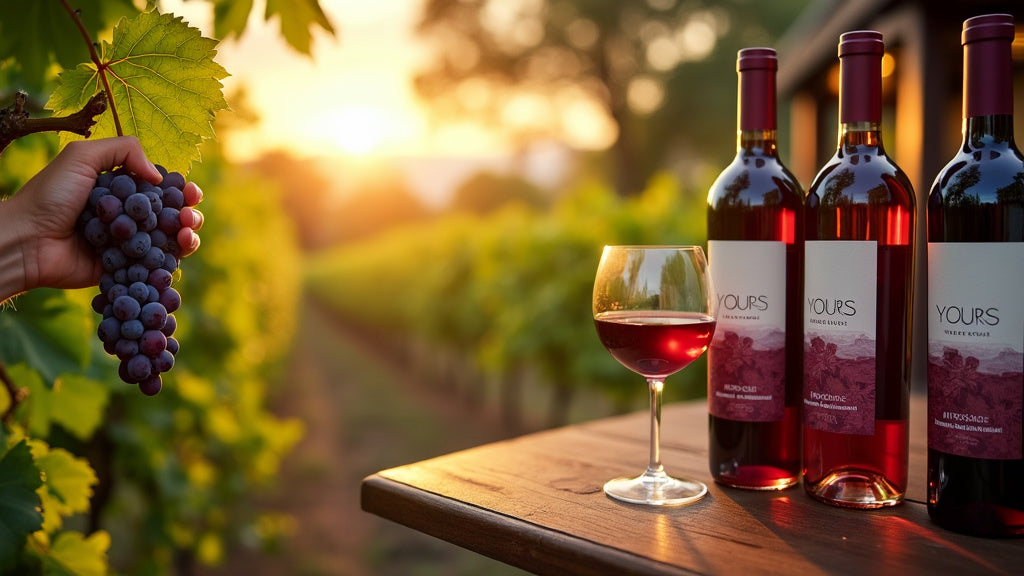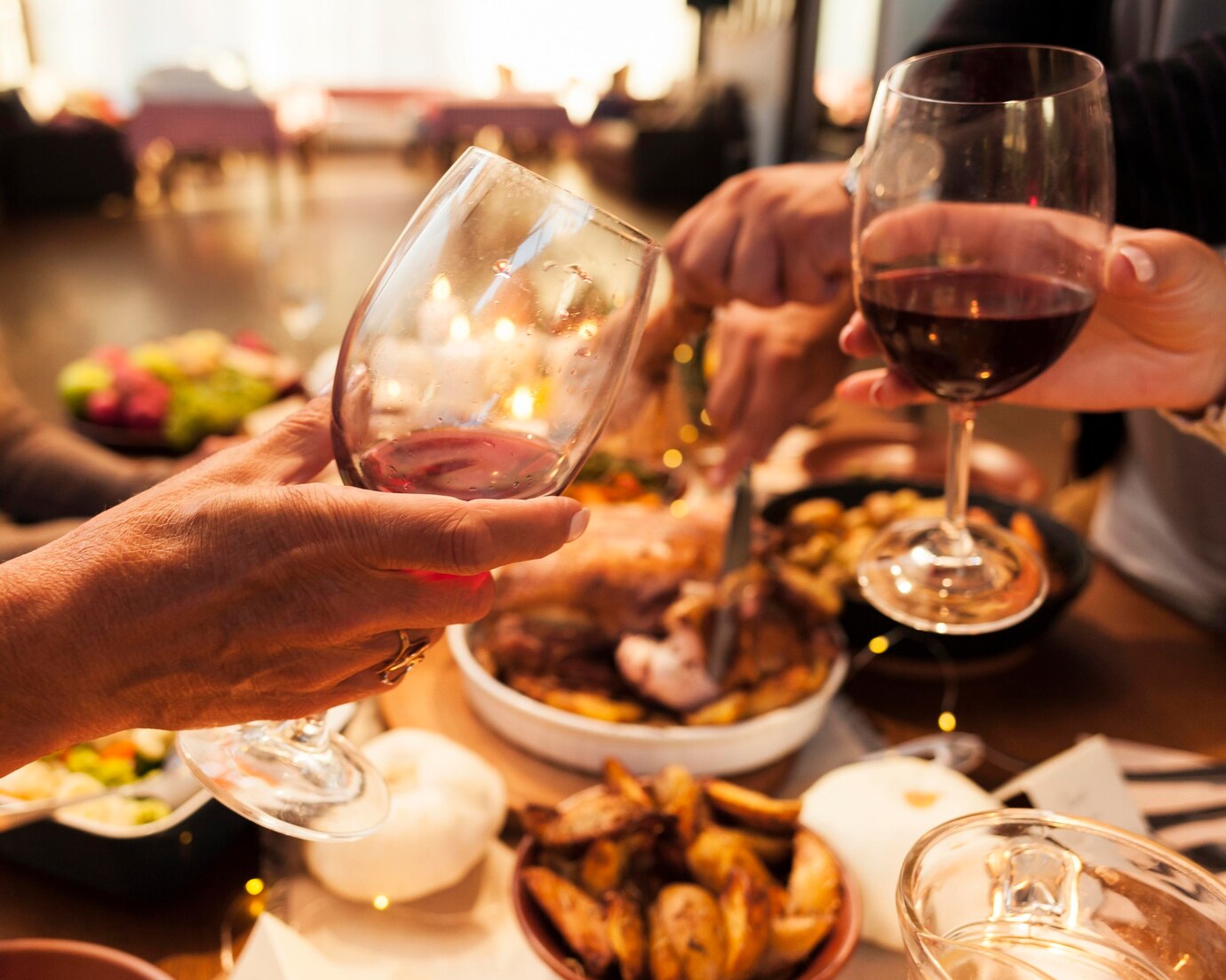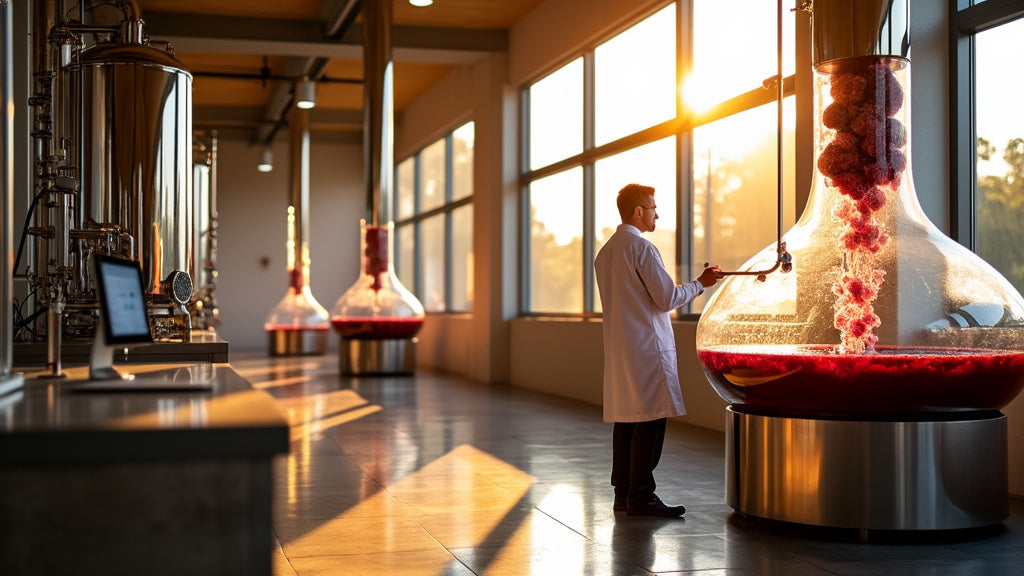Layering Flavors: Non-Alcoholic Wine Bitters in Mixology
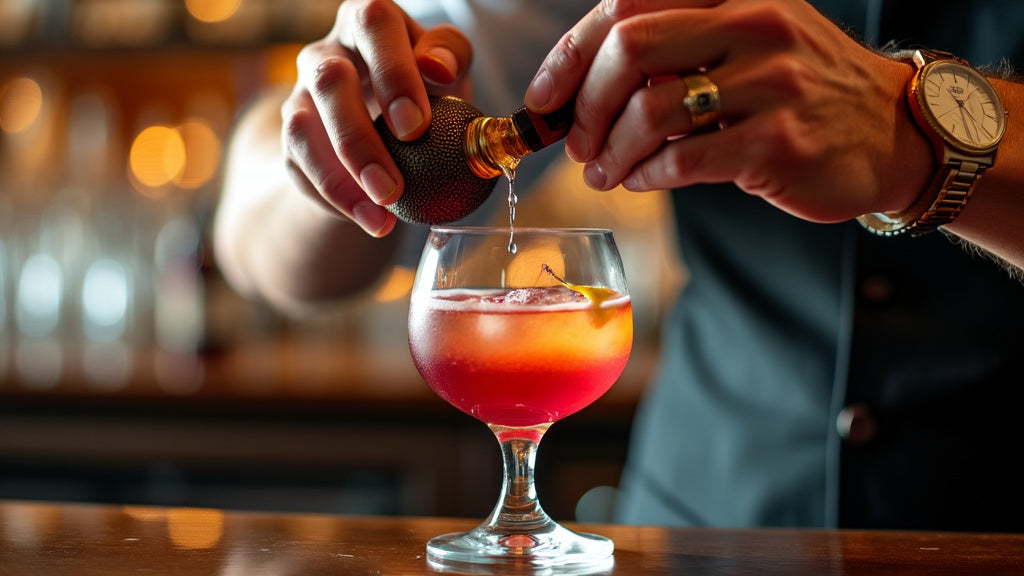
Introduction to Non-Alcoholic Wine Bitters
Non-alcoholic wine bitters are flavor enhancers that add depth and complexity to alcohol-free cocktails. These concentrated extracts, made from herbs, spices, and botanicals, have a rich history in traditional mixology. Now, they're finding a new purpose in alcohol-free drinks. YOURS offers a range of alcohol-free bitters for your non-alcoholic cocktail experience.
Layering flavors in mixology involves carefully combining different taste elements to create a balanced and interesting drink. With non-alcoholic wine bitters, you can add nuanced flavors without alcohol. This technique is key for crafting tasty mocktails that are just as good as alcoholic drinks.
As more people want non-alcoholic options, knowing how to use bitters effectively is important for both home mixologists and professional bartenders. Let's learn how to master this skill and make amazing alcohol-free drinks.
Key Takeaways
- Non-alcoholic wine bitters add depth and complexity to alcohol-free cocktails
- Layering flavors is crucial for creating sophisticated mocktails
- Understanding flavor profiles and using the right tools are essential for successful non-alcoholic mixology
- Balancing sweetness and incorporating aromatics enhance the overall drink experience
- Experimentation and practice are key to mastering non-alcoholic cocktail creation
The Rise of Non-Alcoholic Mixology
Non-alcoholic mixology has become more popular recently. People are looking for alternatives to alcoholic drinks for health reasons, lifestyle choices, or to have inclusive social experiences. This trend has led to lots of creativity in alcohol-free drinks.
Non-alcoholic cocktails have many benefits. They let everyone enjoy drinking together without the effects of alcohol. These drinks can be just as complex and satisfying as alcoholic ones when made with care and good ingredients.
YOURS has joined this trend by offering various non-alcoholic wines and spirits for mocktails. From their award-winning California Chardonnay to their California Red Blend, these products are great for trying out bitters and flavor layering.
Understanding Flavor Profiles in Non-Alcoholic Wine Bitters
Non-alcoholic wine bitters come in many flavors, each with unique tastes. Common ones include citrus, herbal, floral, and spice. These concentrated extracts can make your non-alcoholic cocktails taste more interesting and balanced.
When using bitters with non-alcoholic wines, think about how the flavors will mix. For example, a citrus bitter might go well with a crisp non-alcoholic Chardonnay, while a spiced bitter could make a non-alcoholic red blend taste even better.
Knowing the basic taste types - sweet, sour, salty, bitter, and umami - can help you make more balanced and interesting non-alcoholic cocktails. Bitters mainly add bitter and aromatic flavors to a drink, but they can also make other flavors stronger when used well.
Essential Tools for Layering Flavors
To get good at layering flavors in non-alcoholic cocktails, you'll need some important tools:
Essential Tools for Layering Flavors in Non-Alcoholic Cocktails
- Jigger: A measuring cup used to accurately measure liquor pours.
- Bar Spoon: A long, slender spoon used for mixing and layering ingredients.
- Shaker: A container used to mix and chill ingredients.
- Strainer: A tool used to strain liquids and prevent ice and solids from entering the glass.
- Dropper Bottles: Small bottles used to dispense precise amounts of bitters and other flavorings.
- Glassware: Various types of glasses used to serve and present cocktails, such as highball, old fashioned, and martini glasses.
Using the right glasses is important for showing off your layered non-alcoholic cocktails. The right glass can make the drink smell better and look nicer, making it more enjoyable for your guests. For example, a wide glass can help release the smells of herbal bitters, while a tall, narrow glass can keep the bubbles in a sparkling mocktail.
Techniques for Layering Flavors
Layering flavors in non-alcoholic cocktails takes attention to detail and understanding how different ingredients work together. Start with your base, usually a non-alcoholic wine or spirit alternative. Then, add your modifiers, like fresh juices or syrups. Finally, use bitters to add depth and complexity.
The order you add ingredients can really change the final taste. Usually, start with the heaviest ingredients and work your way up to the lightest. This way, the flavors mix well together.
How you mix also matters for layering flavors. Stirring is gentle and good for clear drinks, while shaking is perfect for drinks with fruit juices or cream. For a true layered effect, try carefully pouring ingredients over the back of a spoon.
Another technique is "floating," where you gently pour a lighter ingredient over a heavier one to create separate layers. This can work really well with non-alcoholic bitters, letting their flavors slowly mix into the drink as you sip.
Creating a Base with Non-Alcoholic Wines
Picking the right non-alcoholic wine as your base is really important for making a well-balanced mocktail. YOURS offers different options to match different flavor profiles:
When creating your base, think about how sweet and sour the non-alcoholic wine is. A dry non-alcoholic Chardonnay might work well in a mocktail that's like a classic martini, while a fruity non-alcoholic rosé could be perfect for a summer spritz.
Try different combinations to find the perfect balance. For example, you could try a non-alcoholic French 75 using YOURS Non-Alcoholic Sparkling Brut as a base, with a dash of citrus bitters.
Think about the temperature of your base too. Cold non-alcoholic wines can make some flavors less strong, while room temperature wines might let more subtle flavors come through. Playing with temperature can add another layer to your flavor layering techniques.
Incorporating Non-Alcoholic Wine Bitters
When using non-alcoholic wine bitters, a little goes a long way. Start with just a few drops and add more if needed. Different bitters can really change how your drink tastes, so try out different ones to find combinations you like.
Recommended Drops of Bitters per 5 oz Drink
Try mixing different bitters to create unique flavor profiles. For instance, a mix of orange and aromatic bitters can add depth to a non-alcoholic Old Fashioned made with YOURS Non-Alcoholic California Red Blend.
Think about when you add bitters to your mocktail. Adding them at the start lets the flavors mix more, while adding them at the end can make a stronger smell and initial taste.
Enhancing Aromatics and Garnishes
Aromatics and garnishes are really important for the overall experience of a cocktail. Fresh herbs, citrus peels, and edible flowers can make your non-alcoholic drinks look and smell great.
Try making aromatic mists using non-alcoholic bitters and a small spray bottle. This lets you add a layer of scent to your drink without changing its taste much.
Experiment with adding herbs or spices to non-alcoholic wines to create unique bases for your mocktails. For example, you could add fresh basil to YOURS Non-Alcoholic California Chardonnay for a refreshing summer drink.
Balancing Sweetness in Non-Alcoholic Cocktails
Getting the right amount of sweetness is really important in non-alcoholic mixology. Natural sweeteners like honey, agave nectar, or maple syrup can add depth without overpowering other flavors. YOURS non-alcoholic wines are made to have very little sugar, which is a great starting point for balanced cocktails.
When adjusting sweetness, think about the other things in your drink. A sour non-alcoholic wine might need a bit more sweetener, while a fruity blend could need less. Always taste as you go and adjust as needed.
For a seasonal twist, try this Non-Alcoholic Thanksgiving Apple Cider Sangria recipe using YOURS Non-Alcoholic California Chardonnay as a base. The natural sweetness of apple cider goes really well with the wine, making a festive and tasty mocktail.
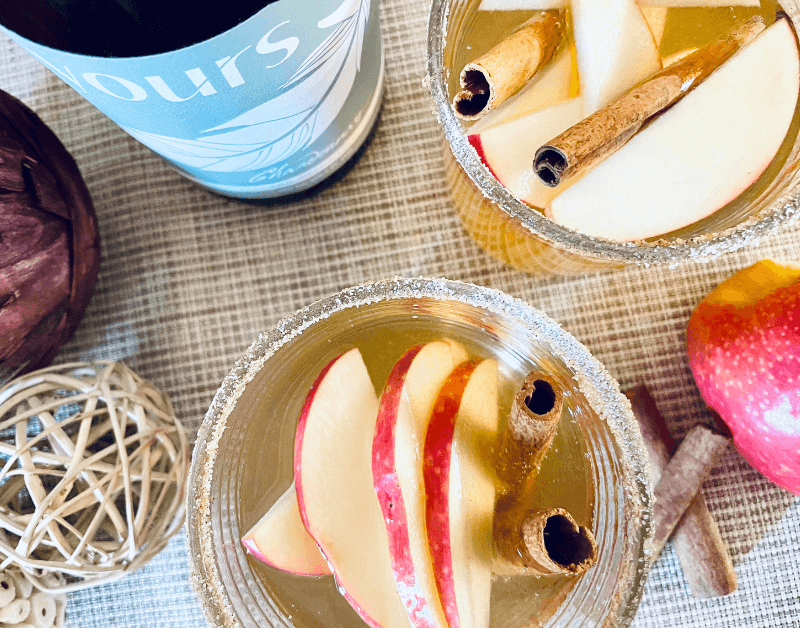
Conclusion: Mastering Non-Alcoholic Mixology
Getting good at layering flavors with non-alcoholic wine bitters opens up lots of possibilities in mixology. By understanding flavor profiles, using the right tools, and trying different techniques, you can create sophisticated, alcohol-free cocktails that are just as good as ones with alcohol.
Remember, the key is balance and experimentation. Don't be afraid to try new combinations and adjust recipes to fit what you like. With practice and creativity, you'll soon be making impressive non-alcoholic cocktails that everyone can enjoy.
As you keep exploring non-alcoholic mixology, think about keeping a flavor journal to write down your experiments and discoveries. This can be really helpful as you get better and create your own signature mocktails.
Check out the range of non-alcoholic wines from YOURS to start your journey into the exciting world of alcohol-free mixology. With their high-quality products and your new knowledge of flavor layering, you're ready to create delicious, inclusive drinks for all occasions. Cheers to creating tasty, inclusive drinks for everyone!

